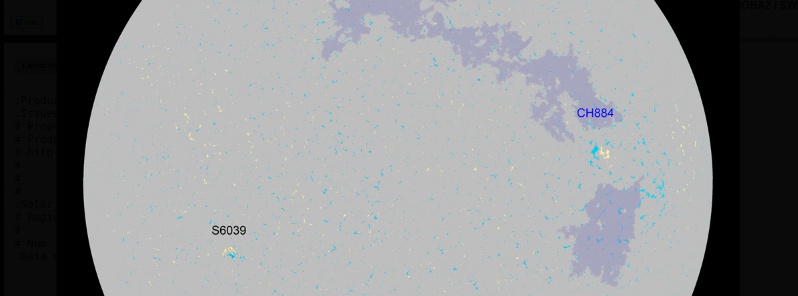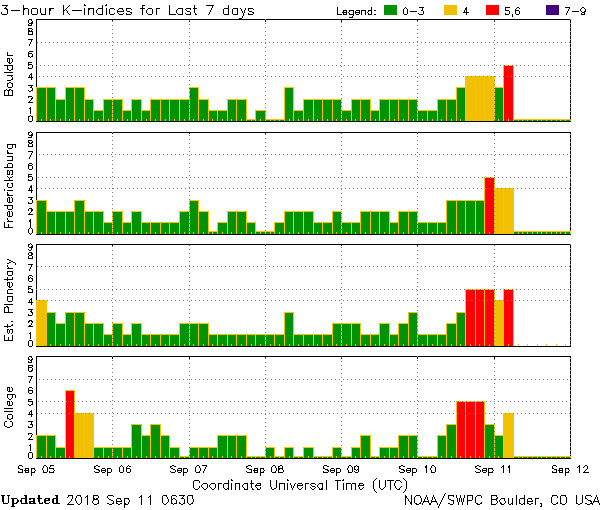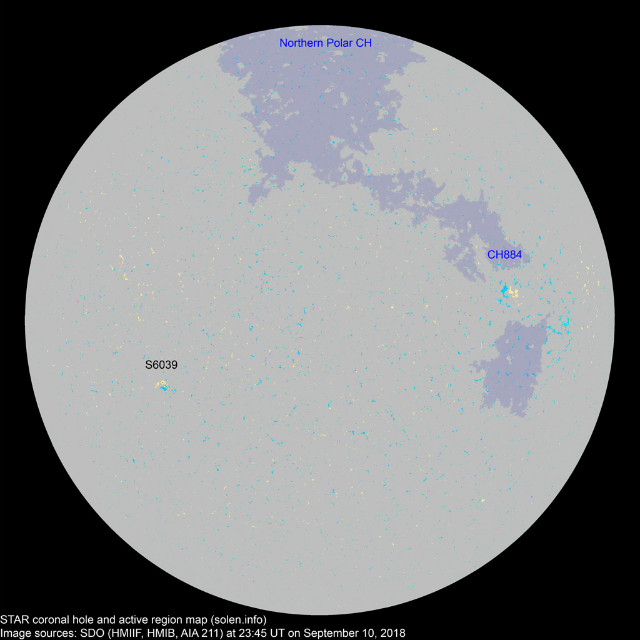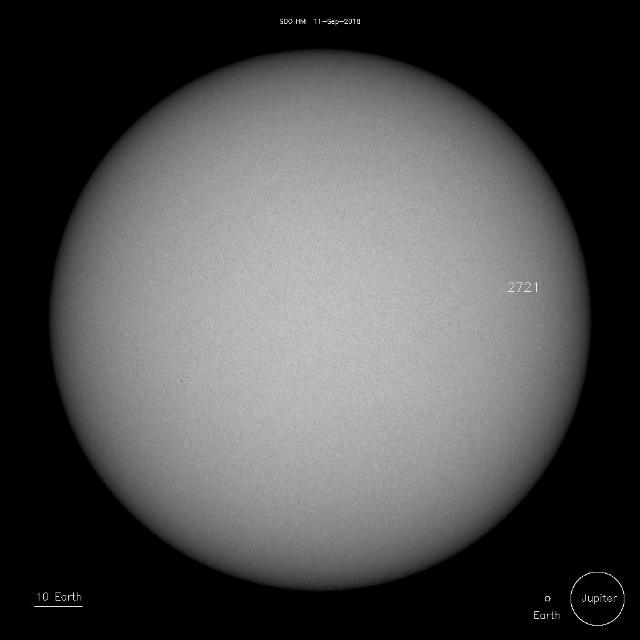Positive polarity CH HSS sparks geomagnetic storming

A G2 – Moderate geomagnetic storm watch has been issued for September 11, 2018 due to the onset of positive polarity coronal hole high speed stream.
Solar wind parameters over the past 24 hours were descriptive of the passage of Co-rotating Interaction Region (CIR) and the subsequent onset of a positive polarity Coronal Hole High Speed Stream (CH HSS). The total field strength was at nominal levels early September 10, then steadily rose to greater than 10 nT. The Bz component of the IMF deflected to a maximum southward deviation of -12 nT. Solar wind speeds climbed from around 350 km/s to over 500 km/s by day's end. The phi angle was in a predominantly positive orientation.
Solar wind parameters are expected to remain elevated for the next several days while under the influence of a positive polarity CH HSS.
As a response to elevated solar wind speed, the geomagnetic field reached G1 – Minor storm levels midday September 10 with the onset of a positive polarity CH HSS and the preceding CIR.
The geomagnetic field will likely reach G2 – Moderate levels on September 11 as a result of a positive polarity CH HSS and a G2 – Moderate geomagnetic storm watch is in effect. Activity is expected to taper some by September 12, but G1 – Minor storm conditions are still likely. September 13 is expected to be a day of transition, with G1 conditions becoming less likely, and mostly active conditions being expected.


Solar activity was at very low levels over the past 24 hours. Region 2721, the only numbered region on the Earth side of the Sun, decayed to plage. The activity is expected to remain at very low levels over the next three days.

The greater than 2 MeV electron flux reached moderate levels and the greater than 10 MeV proton flux was steady at background levels. Over the next three days, the greater than 2 MeV electron flux is expected to increase from normal to moderate levels to high levels by September 13. The greater than 10 MeV proton flux is expected to persist at background levels.
If you missed the show last night, here's a recap of what happened from Sortvatn on Senja island, Norway. It all started quietly around 21:30 local time with some nice bands already in the south reflecting on the still lake, Adrien Mauduit reports.
Then around 22:00, it 'literally exploded into overhead corona for over 5 minutes, which makes it the longest I have witnessed to date. After that the aurora went into pulsating mode (typical of solar storms) but some very nice blue pillars appeared on the northern horizon almost all night (those were too faint to be shown here without too much noise).'

Featured image: STAR coronal hole and active region map. Credit: Solen.Info

Commenting rules and guidelines
We value the thoughts and opinions of our readers and welcome healthy discussions on our website. In order to maintain a respectful and positive community, we ask that all commenters follow these rules.